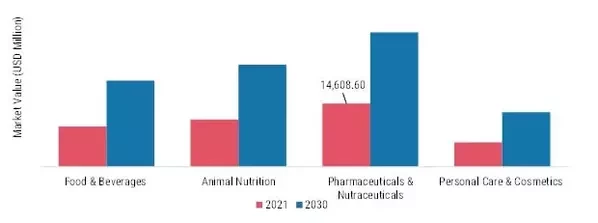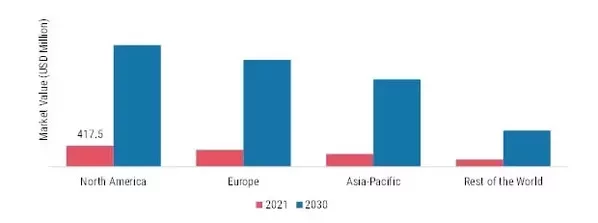Certified Global Research Member


Key Questions Answered
- Global Market Outlook
- In-depth analysis of global and regional trends
- Analyze and identify the major players in the market, their market share, key developments, etc.
- To understand the capability of the major players based on products offered, financials, and strategies.
- Identify disrupting products, companies, and trends.
- To identify opportunities in the market.
- Analyze the key challenges in the market.
- Analyze the regional penetration of players, products, and services in the market.
- Comparison of major players’ financial performance.
- Evaluate strategies adopted by major players.
- Recommendations
Why Choose Market Research Future?
- Vigorous research methodologies for specific market.
- Knowledge partners across the globe
- Large network of partner consultants.
- Ever-increasing/ Escalating data base with quarterly monitoring of various markets
- Trusted by fortune 500 companies/startups/ universities/organizations
- Large database of 5000+ markets reports.
- Effective and prompt pre- and post-sales support.
The insect protein market is influenced by several key factors that shape its growth and dynamics. Firstly, increasing demand for sustainable protein sources drives interest in insect-based products. As the global population continues to grow, there is a growing awareness of the environmental impact of traditional livestock farming, including its contribution to greenhouse gas emissions, land use, and water consumption. Insects offer a more sustainable alternative, requiring significantly less land, water, and feed compared to traditional livestock, and emitting fewer greenhouse gases. Consequently, consumers, food manufacturers, and policymakers are increasingly turning to insect protein as a more eco-friendly protein source to meet growing protein demands.
Economic factors also play a significant role in the insect protein market. The cost of production, processing, and distribution affects the pricing and affordability of insect-based products. While insect protein products are often positioned as premium or specialty items due to their novelty and sustainability credentials, efforts to scale up production and improve efficiency are driving down costs, making insect protein more accessible to mainstream consumers. Moreover, fluctuations in commodity prices, currency exchange rates, and input costs can impact the profitability and competitiveness of insect protein producers and manufacturers. The Insect Protein Market is poised to reach USD 6,986.56 million by 2030, exhibiting a remarkable compound annual growth rate (CAGR) of 23.28% from 2022 to 2030. This projection underscores the accelerating demand and adoption of insect-based protein products across various industries over the forecast period.
Government regulations and policies related to food safety, labeling, and insect farming influence the insect protein market. Regulatory approval and oversight are essential for ensuring the safety and quality of insect-based products for human consumption. In many countries, insects are considered novel foods, requiring regulatory approval before they can be sold as food products. Moreover, regulations governing insect farming practices, such as hygiene standards, feed quality, and waste management, impact the sustainability and scalability of insect protein production. Government incentives, subsidies, and support programs may also influence investment and innovation in the insect protein industry.
Technological advancements and innovations drive growth and innovation in the insect protein market. Advances in insect farming techniques, such as automated systems, vertical farming, and controlled environments, enable producers to optimize production efficiency, reduce costs, and scale up operations. Furthermore, innovations in processing technologies, such as drying, milling, and extrusion, enable the development of a wide range of insect-based products, including protein powders, protein bars, snacks, and meat alternatives. Additionally, research into flavor masking, texture optimization, and product formulation helps improve the palatability and sensory attributes of insect-based foods, enhancing consumer acceptance and adoption.
Changing consumer perceptions and dietary trends also influence the insect protein market. While insects have long been consumed as a traditional food in many cultures, there is a growing acceptance and interest in insect-based products among Western consumers. Factors such as increasing awareness of the environmental benefits of insect farming, shifting attitudes towards alternative protein sources, and the rise of plant-based and flexitarian diets contribute to the growing demand for insect protein products. Moreover, the nutritional profile of insects, which is high in protein, vitamins, minerals, and healthy fats, appeals to health-conscious consumers seeking nutrient-dense and sustainable food options.
Market competition and industry dynamics shape the insect protein market. The industry is characterized by a diverse range of players, including insect farmers, processors, manufacturers, and retailers, competing on factors such as product quality, pricing, branding, and distribution channels. Moreover, partnerships, collaborations, and investments among industry stakeholders contribute to market consolidation and expansion, driving innovation and diversification in the insect protein sector.
Covered Aspects:
| Report Attribute/Metric | Details |
|---|---|
| Growth Rate | 23.28% (2022-2030) |
Insect Protein Market Highlights:
Global Insect Protein Market Overview
Insect Protein Market Size was valued at USD 1154.2 million in 2021. The Insect Protein market industry is projected to grow to USD 6,986.56 million by 2030, exhibiting a compound annual growth rate (CAGR) of 23.28% during the forecast period (2022 - 2030). The growth of the alternative protein market is influenced by various factors such as increasing urbanization, higher investment in alternative protein companies, advancements in food technology, and the nutritional benefits of edible insects. However, as the demand for insect protein increases, economies of scale may help to bring down production and distribution costs. Increasing demand for alternate protein to fuel the market growth during the forecast period.

Source: Secondary Research, Primary Research, MRFR Database and Analyst Review
Insect Protein Market Trends
- Growing Application Areas to Grow Demand For Insect Protein
The high protein content in insects and the growing applications for insect protein are driving the surge in demand for this alternative protein source. Insects are an excellent source of protein, with many species containing between 50% and 80% protein by dry weight. In comparison, traditional protein sources such as beef, chicken, and pork typically contain between 15% and 25% protein by dry weight. Compared to other plants and animals, insects are a more valuable source of protein and rearing them is a more cost-effective option. Initially, insect-based protein was primarily used as an ingredient in Animal Nutrition, but with the increasing awareness of their high protein content, their usage has expanded to various industries. The protein content of insects varies among species, making them a versatile and suitable alternative to traditional protein sources. Overall, insect-based protein is becoming a more popular and viable option for meeting the growing demand for protein.
Insect Protein Market Segment Insights
Insect Protein Insect type Insights
The Insect Protein Market segmentation, based on insect type, crickets, mealworms, grasshoppers, ants, bees, termites, black soldier fly, others, The cricket segment held the majority share in 2021 contribution to around ~18% in respect to the Insect Protein Market revenue. The cumulative population has incidentally amplified the demand for meat. Though, the damaging gases from livestock manufacture have main influences on environmental sustainability. As more people become aware of the health and sustainability benefits of insect protein, the market for insect protein products is expected to grow. Insect protein can be used in a variety of products, including protein bars, energy drinks, and meat substitutes, among others. Additionally, insect protein is being explored as a potential solution to global food insecurity due to its high nutritional value and low environmental impact.
February 2021 Aspire Food Group and its partners received funding from Next Generation Manufacturing (NGen) of over USD 13.2 million to assist in the development of a cricket protein factory in Canada.
Figure 1: Insect Protein Market, By Insect Type, 2021 & 2030 (USD Million)

Source: Secondary Research, Primary Research, MRFR Database and Analyst Review
Insect Protein Application Insights
The Insect Protein Market segmentation, based on application, includes food & beverages, animal nutrition, pharmaceuticals & nutraceuticals, personal care & cosmetics. The food & beverages segment is expected to grow at the highest CAGR during the forecast period 2022–2030. The fast growth of this segment is driven by the growing food shortage worldwide, the increasing consumption of processed whole insects as food, and the rising demand for high-quality products.
Figure 2: Insect Protein Market, by Form, 2021 & 2030 (USD Million)

Source: Secondary Research, Primary Research, MRFR Database and Analyst Review
Insect Protein Regional Insights
By Region, the segments is categorized into the market into North America, Europe, Asia-Pacific, South America, and Middle East & Africa. North America's insect protein market accounted for the largest market share at 36.32% in 2021 and is expected to exhibit a fastest-growing 22.64% CAGR during the study period. as well as higher adoption of the goods in the region. Further, the major countries studied are Canada, U.S., Mexico, Germany, the UK, France, Italy, Spain, China, Japan, India, Australia, South Korea, Argentina, and Brazil.
Figure 4: INSECT PROTEIN MARKET SHARE BY REGION 2021-2030 (USD Million)

Source: Secondary Research, Primary Research, MRFR Database and Analyst Review
The North America Insect Protein market accounts for the second-largest market share. Mexico, the US, and, Canada, are all comprised in the analysis of the North American market. The expanding product portfolios of main manufacturers are an important factor for the growth of the market in the region.
Innovation in flavors of various beverages is also expected to positively impact the growth of the increased expenditure on functional food products, an increase in the number of sports and growing demand from a variety of industries, including animal feed, pharmaceuticals, food and beverages, cosmetics, and others. The region is witnessing an increased demand for nutritional food items and consumer knowledge about the use of insect-based goods. The growing population growing and the demand for traditional hog, cattle, and chicken meat increasing, insects are being seriously explored as a source of animal protein.
Insect Protein Key Market Players & Competitive Insights
Key market players are continuously investing a lot of money on R&D to rise their product lines, which will help the Insect Protein market grow even more. Most of the companies creating insect protein powders have arisen in North America and budding in their production capability. Competitors in the Insect Protein industry must offer cost-effective items to expand and survive in an increasingly competitive and rising market environment. The global market for insect protein is fragmented, owing to the presence of large regional and domestic players in different countries.
Key Companies in the Insect Protein market includes
- InnovaFeed SAS,
- Bioflytech S.L,
- F4F SpA,
- Hexafly,
- SFly Comgraf SAS,
- Darling Ingredients Inc.,
- Nutrition Technologies,
- Entofood Sdn Bhd,
- Protix B.V.,
- nextProtein SA s
Insect Protein Industry Developments
November 2020 Protenga built smart insect farms that produce insect proteins that can be used as feed or fertilizer in agriculture.
March 2021 In March 2021, Nutrition Technologies raised USD 5 million in a Pre-Series B funding round to establish an insect protein factory in Malaysia.
Insect Protein Market Segmentation
Insect Protein Insect type Outlook
- Crickets
- Mealworms
- Grasshoppers
- Ants
- Bees
- Termites
- Black Soldier Fly
- Others
Insect Protein Application Outlook
- Food & Beverages
- Animal Nutrition
- Pharmaceuticals & Nutraceuticals
- Personal Care & Cosmetics
Insect Protein Regional Outlook
-
North America- US
- Canada
-
Europe- Germany
- France
- UK
- Italy
- Spain
- Rest of Europe
-
Asia-Pacific- China
- Japan
- India
- Australia & New Zealand
- Rest of Asia-Pacific
-
Rest of the World- South America
- Middle East
- Africa
Leading companies partner with us for data-driven Insights
Kindly complete the form below to receive a free sample of this Report
Tailored for You
- Dedicated Research on any specifics segment or region.
- Focused Research on specific players in the market.
- Custom Report based only on your requirements.
- Flexibility to add or subtract any chapter in the study.
- Historic data from 2014 and forecasts outlook till 2040.
- Flexibility of providing data/insights in formats (PDF, PPT, Excel).
- Provide cross segmentation in applicable scenario/markets.





















